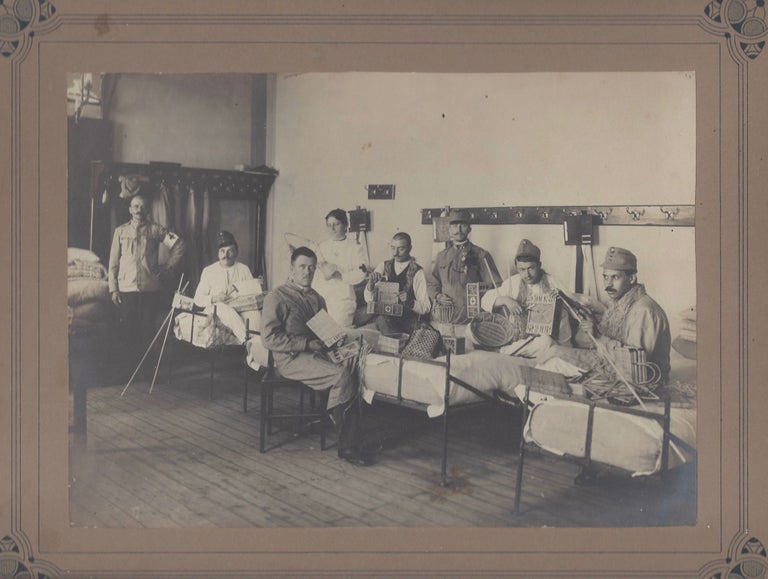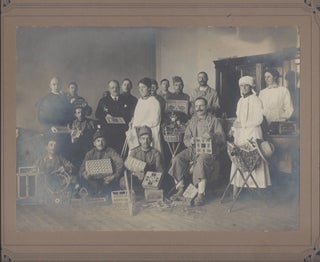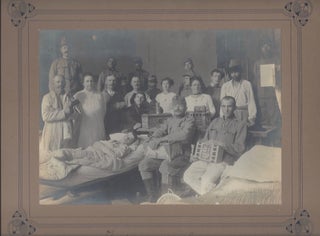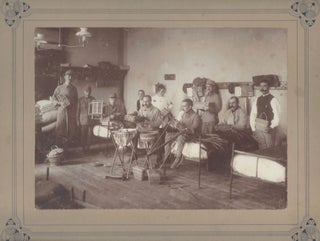Photo-Documentation of Occupational Therapy for Wounded and Mentally Ill Soldiers of World War I, in Transylvania Between 1914–1917.
Dated between 1914 and 1918 in Kolozsvár. 22 original, vintage, black and white photographs, mounted on cardboard. Many labelled on verso in Hungarian some in German, these inscriptions imply that the photographs belonged to Mrs. Zsigmond Zombory, the developer and leader of the therapy. Many photos are labelled by her, and some of the images were probably exhibited in Germany in München. Various image sizes: 15,5–18 × 21–24 cm. The majority of the images are in good, very good condition, some faded, few rubbed. Cardboards stained, chipped, worn. 2 board broken that effects the photo. Please ask for detailed condition report!
Occupational therapy and handicraft programs, like woodworking or basket making, became important and known as a health care profession in the Progressive Era of the first decades of the 20th century, and successfully developed as a rehabilitation method during the First World War. It used the ideas of the Arts and Crafts Movement, claimed that the occupation of the patient’s body and mind fastens the recovery process. This was considered rather important in the armies of World War I, to make the soldiers return to the battlefield as quickly as possible.
Most of the evidences of the use of occupational therapy during WWI are related to the Allied Powers especially to the US Army, which makes this unique photographic documentation particularly important and interesting, as it proves the very early occurrence of the method in the army of the Central Powers.
The method was developed, and the therapy was led by Mrs. Zsigmond Zombory in Kolozsvár (Transylvania; today Cluj-Napoca, Romania) the city that served as military medical centre during the war. This collection of photographs belonged to her, and were presented as illustrations for an exhibition probably in Münich, Germany.
Mrs. Zombory began the therapy already in September 1914 (img. I.), and soon more the 400 (img. I. 1.) Hungarian and German (img. I.3) soldiers participated in the program. The project enjoyed the support of both the civilian (img. I.10) and military leaders (img. II.), and covered the entire city. Many public buildings of Kolozsvár served as medical treatment facility and even children from the local elementary school participated in it with a contribution of making mat slippers for the patients (img. I.6). The program was extended geographically too, the handicrafts were exhibited in nearby cities (img. III. and IV.).
Very less is known about Mrs. Zombory the socially aware noble woman and we could not trace any documentation of her therapy in Kolozsvár during WWI.
.
Price: €6,000.00






